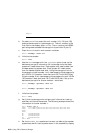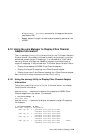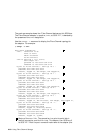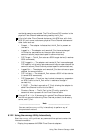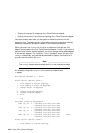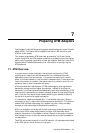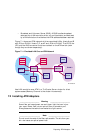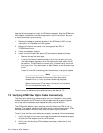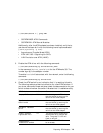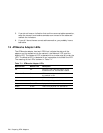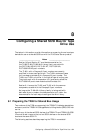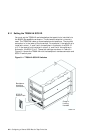Most data traffic in existing customer networks is sent over Local Area
Networks (LANs) such as Ethernet or Token Ring networks. The services
provided by the LANs differ from those of ATM, for example:
• LAN messages are connectionless; ATM is a connection-oriented
technology
• Because a LAN is based on a shared medium, it is easy to broadcast
messages
• LAN addresses are based on hardware manufacturing serial numbers
and are independent of the network topology
In order to use the large base of existing LAN application software, ATM
defines a LAN Emulation (LANE) service that emulates services of existing
LANs across an ATM network.
The LAN emulation environment groups hosts into an emulated LAN
(ELAN) which has the following characteristics:
• Identifies hosts through their 48-bit media access control (MAC) number
• Supports multicast and broadcast services through point-to-multipoint
connections or through a multicast server
• Supports any protocol that uses an IEEE broadcast LAN
• Provides the appearance of a connectionless service to participating end
systems
One or more emulated LANs can run on the same ATM network. Each ELAN
is independent of the others and users cannot communicate directly across
emulated LAN boundries. Communication between ELANs is possible only
through routers or bridges.
Each ELAN is composed of:
• A set of LAN emulation clients (LECs): An LEC resides in each end
system and performs data forwarding, address resolution, and control
functions that provide a MAC-level emulated Ethernet interface to
higher-level software and other entities within the emulated LAN.
• A LAN emulation service, which normally resides on an ATM switch
and consists of:
– LAN Emulation Configuration Server (LECS): An LECS implements
the assignment of individual LAN emulation clients to different
emulated LANs. It provides the client with the ATM address of the
LAN emulation server.
– LAN Emulation Server (LES): An LES implements the control
coordination function for the emulated LAN by registering and
resolving MAC addresses and route descriptors to ATM addresses.
7–2 Preparing ATM Adapters



